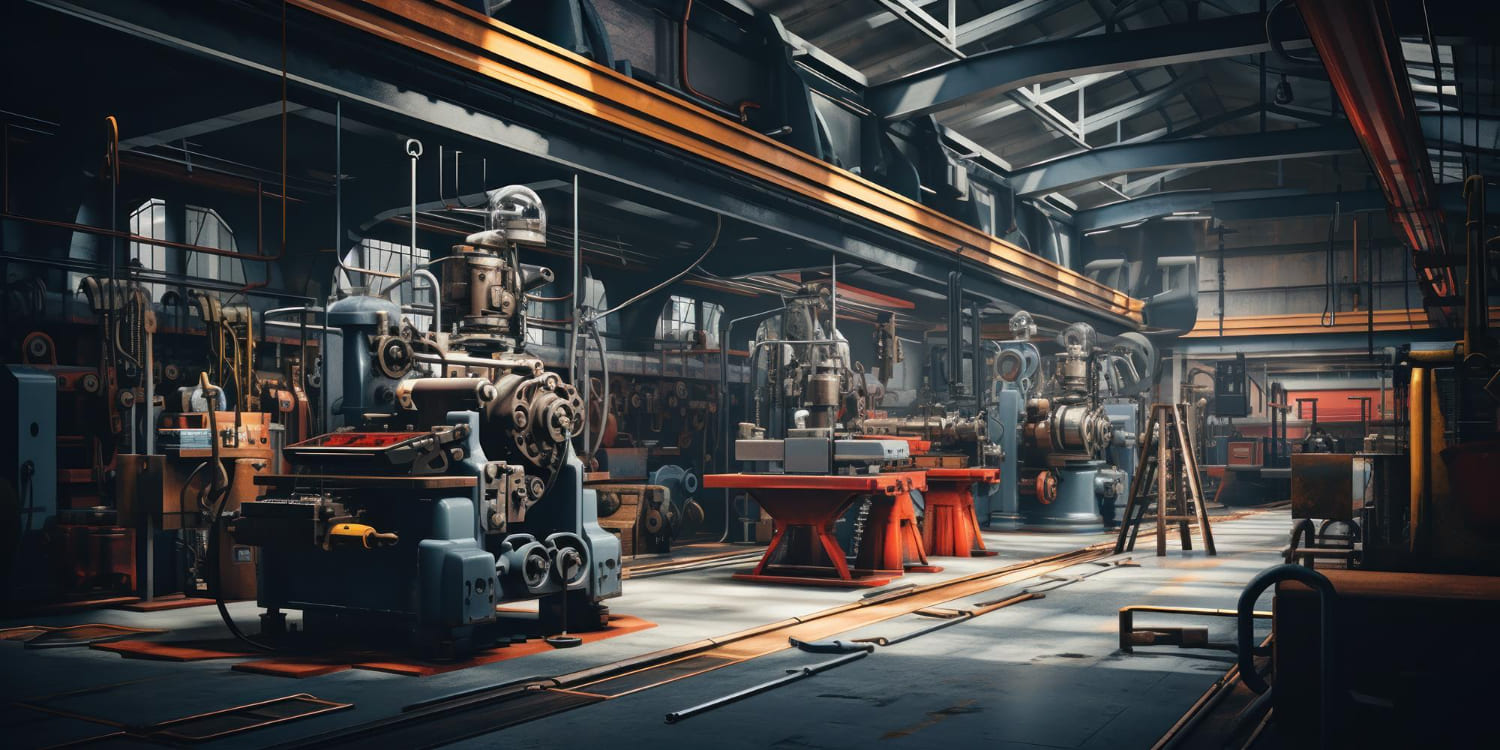Introduction
In today’s fast-paced industrial landscape, maximizing operational efficiency is crucial for businesses to stay competitive. One essential component in many industrial processes is the vacuum pump, which plays a vital role in various applications across industries such as manufacturing, chemical processing, and healthcare. However, like any other machinery, vacuum pumps require proper maintenance to ensure optimal performance and minimize downtime. In this guide, we’ll explore actionable strategies to maintaining your vacuum pump running smoothly, transitioning from downtime to prime time.
Understanding Vacuum Pump Operations
Before delving into maintenance tips, it’s essential to understand the basic principles of dry vacuum pump operations. Vacuum pumps are devices that remove gas molecules from a sealed volume, creating a partial vacuum. They are commonly used in applications where a low-pressure environment is required, such as in vacuum distillation, vacuum drying, and semiconductor manufacturing. There are various types of vacuum pumps, including rotary vane pumps, diaphragm pumps, and liquid ring pumps, each with its unique mechanism and applications.
Regular Maintenance Practices
1. Inspection and Lubrication
Regular inspection of your vacuum pump is essential to identify any signs of wear or damage early on. Check for leaks, loose fittings, and worn-out components regularly. Additionally, proper lubrication is crucial for the smooth operation of the pump. Follow manufacturer recommendations for lubrication intervals and use high-quality lubricants suitable for your pump type.
2. Cleaning and Filtration
Dust, debris, and contaminants can accumulate within the pump system over time, affecting its performance. Regular cleaning and filtration of the pump components, including filters and inlet screens, help prevent clogs and maintain optimal airflow. Ensure proper airflow by keeping the intake vents clear of obstruction.
3. Temperature and Cooling
Maintaining the optimal operating temperature is vital for the longevity of your vacuum pump. Monitor temperature levels during operation and ensure adequate cooling to prevent overheating. Install additional cooling systems if necessary, especially in high-demand applications where pumps are subjected to continuous operation.
Advanced Maintenance Techniques
1. Vibration Analysis
Vibration analysis is a predictive maintenance technique that can help detect potential issues in vacuum pumps before they escalate into major problems. Invest in vibration monitoring equipment to track vibration levels and identify abnormalities indicative of mechanical wear or misalignment.
2. Performance Optimization
Optimizing the performance of your vacuum pump involves fine-tuning various parameters such as pressure levels, flow rates, and operating speed. Regularly monitor performance metrics and make adjustments as needed to achieve maximum efficiency and productivity.
3. Professional Servicing
While basic maintenance tasks can be performed in-house, some complex repairs and servicing may require the expertise of professional technicians. Schedule regular servicing and inspections by certified technicians to ensure thorough maintenance and adherence to industry standards.
Advanced Troubleshooting Tips
1. Leak Detection
Vacuum leaks can significantly impact the performance of your vacuum pump and may go undetected without proper monitoring. Invest in leak detection equipment such as helium leak detectors or ultrasonic leak detectors to identify and address leaks promptly. Conduct routine leak tests to ensure the integrity of the system and prevent air ingress.
2. Pump Overhaul
Over time, internal components of the vacuum pump may experience wear and degradation, affecting its efficiency and reliability. Consider scheduling periodic pump overhauls to replace worn-out parts, such as seals, bearings, and gaskets. A comprehensive overhaul can restore the pump’s performance and extend its lifespan.
3. System Optimization
In addition to maintaining the vacuum pump itself, optimizing the entire vacuum system can further enhance efficiency and performance. Evaluate the layout of the system, including piping, valves, and connections, to minimize pressure drop and optimize airflow. Incorporate energy-saving features such as variable speed drives and automatic controls to maximize energy efficiency.
Preventive Maintenance Practices
1. Regular Inspections
Perform visual inspections of the vacuum pump and associated components on a regular basis. Look for signs of wear, corrosion, or damage, and address any issues promptly. Pay attention to abnormal sounds or vibrations, which may indicate potential problems.
2. Lubrication
Proper lubrication is essential for ensuring smooth operation and extending the lifespan of the vacuum pump. Follow manufacturer recommendations for lubrication intervals and use high-quality lubricants compatible with your pump’s design. Inspect and replenish lubricant levels as needed.
3. Cleaning
Keep the vacuum pump and surrounding area clean and free from debris, dust, and other contaminants. Regularly remove accumulated dirt and debris from filters, vents, and cooling fins to maintain optimal airflow and cooling efficiency.
4. Temperature Monitoring
Monitor operating temperatures to ensure the vacuum pump does not exceed recommended limits. Install temperature sensors or thermal switches to detect overheating and implement thermal management measures as necessary, such as improving ventilation or adding cooling fans.
5. Vibration Analysis
Periodically conduct vibration analysis to detect early signs of mechanical issues such as misalignment, imbalance, or bearing wear. Use vibration monitoring equipment to measure vibration levels and frequencies and identify potential problems before they escalate.
6. Training and Education
Invest in training and education for personnel responsible for vacuum pump operation and maintenance. Ensure they understand proper operating procedures, maintenance practices, and safety protocols to minimize the risk of equipment damage and ensure optimal performance.
7. Seal Maintenance
Check and maintain seals regularly to prevent air leaks and ensure optimal vacuum pressure. Inspect seals for wear, damage, or deterioration, and replace them as needed. Proper sealing is crucial for maintaining vacuum integrity and preventing energy wastage.
8. Filter Replacement
Regularly replace air filters to maintain clean air intake and prevent contaminants from entering the vacuum pump. Clogged or dirty filters can restrict airflow, increase operating temperatures, and reduce efficiency. Follow manufacturer recommendations for filter replacement intervals.
9. Belt Tensioning
Ensure proper belt tension to prevent slippage and maximize power transmission efficiency. Loose belts can cause excessive wear on pulleys and bearings, leading to premature failure. Use a belt tension gauge to adjust tension according to manufacturer specifications.
10. Overhaul Planning
Plan for periodic overhauls or major maintenance tasks based on manufacturer recommendations and operating conditions. Overhauls may include replacing worn components, refurbishing parts, or upgrading to newer technologies to improve performance and reliability.
11. Energy Efficiency Measures
Implement energy-saving measures to reduce operating costs and environmental impact. Consider upgrading to energy-efficient vacuum pump models, optimizing operating parameters, and incorporating variable frequency drives (VFDs) to match pump speed with demand.
12. Remote Monitoring
Utilize remote monitoring and diagnostic systems to track vacuum pump performance in real-time and identify potential issues before they escalate. Remote monitoring allows for proactive maintenance scheduling and reduces the risk of unexpected downtime.
Conclusion
Maintaining your vacuum pump is key to minimizing downtime, reducing operating costs, and maximizing productivity. By implementing regular maintenance practices and incorporating advanced techniques, you can keep your vacuum pump running smoothly, transitioning from downtime to prime time.



